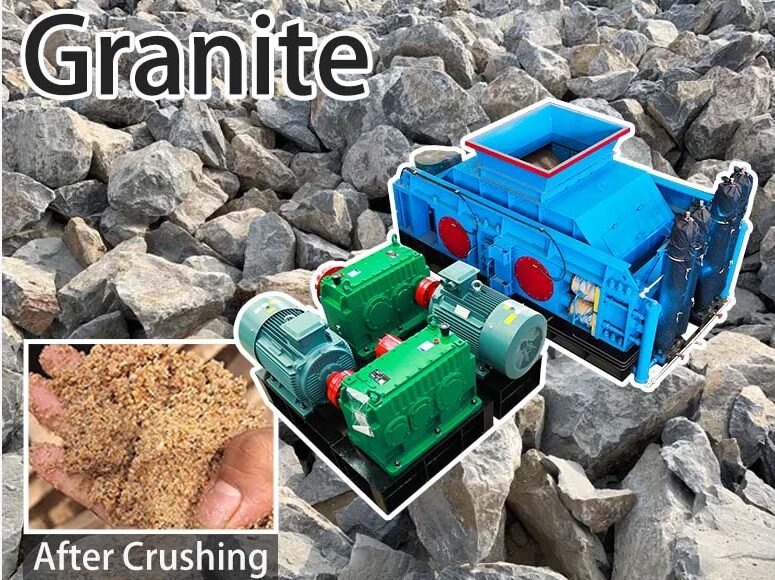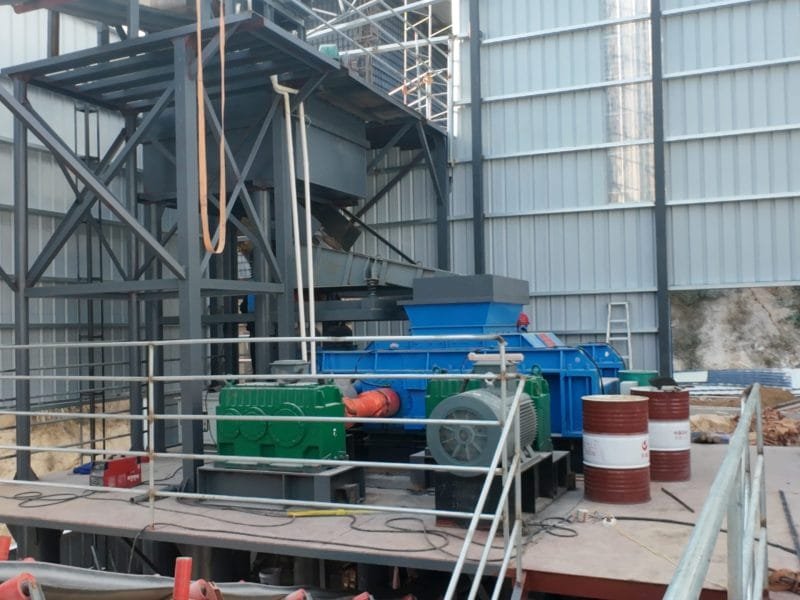Why Roller Sand Making Machine Is Very Effective For Granite Sand Making?
Granite, as a high-hardness rock, places extremely high demands on equipment wear resistance, crushing efficiency, and particle size control during sand production. When processing high-hardness granite, the double-roller sand making machine ensures highly uniform particle size in the finished sand through four key technologies: precision gap control, wear-resistant roller surface design, intelligent closed-loop regulation, and homogeneous feeding.

Roller Sand Making Machine Precision Gap Control System (Core Safeguard)
1. Hydraulic Dynamic Adjustment
Hydraulic cylinders dynamically adjust the gap between the two rollers (adjustable range: 0.5–5 mm) in real time, precisely controlling crushing pressure and output particle size. For example, when processing 1 cm granite, setting the gap to 1 mm directly produces 1 mm fine sand. The hydraulic system responds at millisecond-level speeds, automatically compensating for gap deviations caused by variations in material hardness to prevent particle size fluctuations.
2. Wedge/Shim Mechanical Adjustment
Backup mechanical adjustment devices (e.g., wedges or shims) serve as auxiliary measures. They manually lock the target particle size during hydraulic failures, ensuring uninterrupted production continuity.

Optimized Roller Surface Design and Wear Resistance Enhancement
Ultra-High Wear-Resistant Materials for Extended Stability
Roller skins are constructed with high-chromium alloy (hardness HRC62+) or tungsten carbide coatings, which increase resistance to granite abrasion by over 3 times and extend service life to 1–3 years. With a wear rate below 0.1 mm per thousand tons, the integrity of the roller surface’s tooth profiles is maintained long-term, preventing particle size deviations caused by wear.
Key Terminology Clarification:
Double-roller sand making machine (also termed “double-roll crusher” in industrial contexts).
High-chromium alloy (validated in wear-resistant material studies).
Tungsten carbide coating (a standard solution for extreme abrasion resistance).
Uniform particle size (critical for high-value construction sand).
This translation preserves technical accuracy while adapting to industry-standard English phrasing, ensuring clarity for international engineering or procurement applications.



